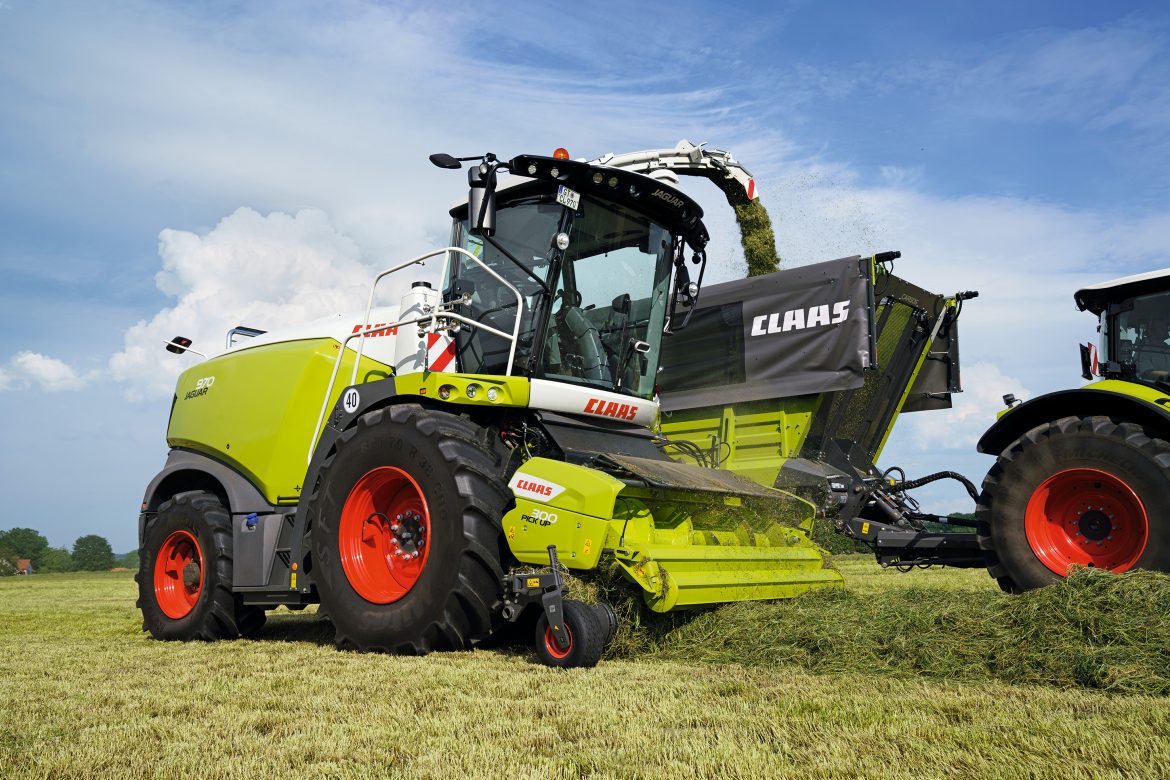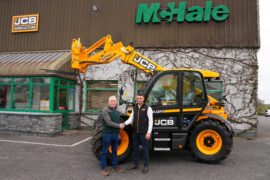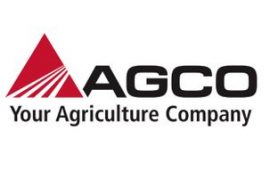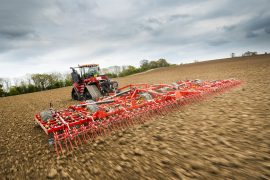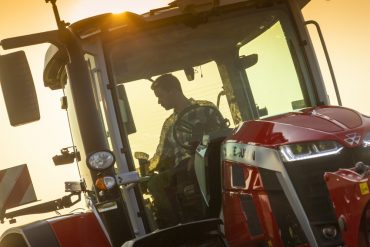The forage harvesters of the JAGUAR 900 model series now benefit from a raft of new features associated with the feeder unit, the corn cracker, and the silage additive dosing system. Further new developments are also available for the ORBIS and PICK UP front attachments.
Consistent crop flow and higher throughput with new front attachment drives
The most significant new development for the JAGUAR 900 model series is the expansion of the options for the front attachment drive. In addition to the all-mechanical drive and the variable drive for the PICK UP grass and ORBIS maize headers, it is now possible for customers to specify a twin hydraulic drive which offers particular benefits when working with the PICK UP.
With this option, the intake auger continues to be driven via the quick-release coupler, and can adjust its speed in accordance with the length of cut; the pick-up reel, however, is provided with an all-new hydraulic drive which allows it to be driven with variable speed adjustment independently of the intake auger. The principal objective of enabling the pick-up reel speed to be varied is to allow it to be adjusted automatically to the forager’s ground speed, so the faster the forward speed the faster the pick up reel speed.
Important advantages associated with this functionality include efficient raking action at all ground speeds with extremely low wear; if the ground speed or the set length of cut is changed, the rotational speeds of the auger and reel are adjusted automatically to the prevailing conditions. If necessary, both speeds can be adjusted to the requirements of the harvesting situation manually by the operator from the cab. It is therefore possible to respond to changing harvesting conditions either automatically or manually from the cab. The result, especially in changing conditions, is even more accurate crop feeding and a more consistent crop flow overall.
Studies of large swaths of whole crop silage harvested using the PICK UP conducted in California with a JAGUAR 990 have shown increased throughput levels of up to 13.7% in extreme conditions compared with an all-mechanical constant drive. These major advantages always come into their own when very high yields are harvested at low ground speeds or low yields are harvested at very high ground speeds.
Wear-resistant BusaCLAD coating for MCC MAX
A new, wear-resistant coating is now available for the MULTI CROP CRACKER MAX which provides a fourfold increase in service life length. In field testing, MCC MAX CRACKER units with the BusaCLAD coating have to date been able to process over 3,100 hectares of maize, with some units now entering their fourth season.
The outstanding resistance to wear not only reduces the actual wear costs significantly, but also the set-up times. Farmers and contractors alike can count on the 30 ring segments of the MCC MAX to provide reliable grain and residual plant processing over several campaigns. The design of the MCC MAX is unique in the market and allows operation across an extremely wide range of cut lengths and processes the crop not only with friction and crushing, but also with cutting and shear forces. Together, these factors maximise the processing effect, even at the highest throughputs, such as those attained by the 925hp JAGUAR 990.
New: Silage additive app for precision dosing and water injection at up to 800 l/h
Farmers and contractors are increasingly relying on silage additives when confronted with high dry matter levels in the grass harvest. In order to simplify dosage preparation for the factory fitted silage additive system, CLAAS has developed a practical app. This helps the operator to find the appropriate dosage and the correct set-up on the basis of the crop, the yield, and the information provided by the silage additive manufacturer. In this way, both underdosage and excess dosage of valuable silage additive can be avoided.
The following key data are entered in the app to allow the correct dosage to be calculated for a given job:
- Expected yield per hectare
- Size of area to be harvested
- Working width
- Expected working speed
- Recommended dosage specified by silage additive manufacturer
- Size of silage additive container
Once the data have been entered, the operator can implement the recommended settings using the CEBIS terminal. The first decision in the course of this process is whether the silage additive should be dosed from the ACTISILER 37 tank or from the large 375 l water tank. The operator can also decide whether the dosing is to be performed in l/t or in l/h. The key data can be adjusted at any point while chopping is underway, for example if the machine is operating faster or slower than originally anticipated. The app is available for Android and Apple via CLAAS connect.
With a second, optional dosing pump, silage additive injection can now be doubled, taking it to quantities of up to 800 l/h. Control of the system is integrated in the corresponding menu in CEBIS. This will help high capacity forage harvesters apply additive in excess of 2 l/tonne if required.
Also new for the JAGUAR 800 and 900 is a water injection system for very difficult harvesting conditions such as grass with a very high sugar content or lucerne. This system automatically injects water into the feeder unit, guide plate area, accelerator and discharge chute whenever there is no crop flow – at the headland, for example, or during forage trailer changeovers. This effective measure helps to prevent the build-up of material in the crop flow and helps to keep the dry matter sensor or NIR sensor clean and accurate. The water tank has a capacity of 375 l; the system is controlled via the CEBIS terminal.

